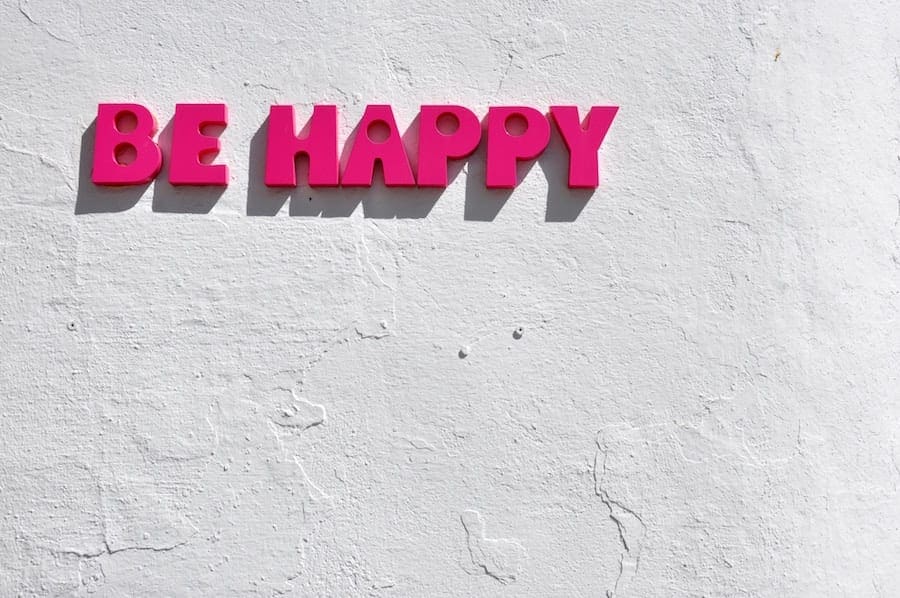Full Disclosure: Clicking on these links could mean a tiny commission for me, at no extra cost to you.
When anxiety hits, we often forget one of the simplest yet most effective tools at our disposal: our breath. A few good, deep breathes can calm your mind, ease your anxiety and recharge your energy so you can tackle the rest of your day. But breathing deeper isn’t just about taking in more air; it’s about perfecting the inner workings of breathwork to boost the calming effects it can have on your mental health. Whether you’re looking to shake off stress, boost your mood or stop an anxiety attack in its tracks, learning how to breathe deeper is the life-changing trick you’ve been searching for. Ready to take a deep breath and see what happens? Let’s get started!
Take a Breath of Anxiety Relief
Inward Breathwork offers expertly guided breathwork sessions to help reduce stress and elevate your emotional well-being. Start your practice today with a 14-day free trial — and feel the difference in every breath.
The Science Behind Deep Breathing and the Nervous System
Understanding the science of deep breathing is key to appreciating its calming effects. When you breathe deeper, you activate the parasympathetic nervous system, often referred to as the “rest and digest” system. This system is responsible for conserving energy, slowing the heart rate, and promoting relaxation.
When this system kicks in, our heart and breathing rates slow down, blood pressure decreases, and digestion gets a boost. This leads to a state of deep relaxation, which in turn promotes recovery and restoration. The best part: there are several deep breathing exercises that can trigger this response to provide you with quick anxiety relief when needed.
Deep breathing also stimulates the vagus nerve, which runs from the brain to the abdomen, playing a critical role in calming the nervous system. As you breathe deeper, the vagus nerve sends signals to slow the heart rate and reduce stress hormone levels, leading to an overall sense of calm.
Ways Deep Breathing Can Help with Anxiety
Deep breathing is a powerful tool for managing anxiety, offering both immediate and long-term benefits. Here are some of the key ways it helps:
- Activates the Parasympathetic Nervous System: Deep breathing stimulates the parasympathetic nervous system 1, which counteracts the “fight or flight” response, promoting relaxation and reducing anxiety.
- Reduces Physical Symptoms of Anxiety: By slowing the heart rate and lowering blood pressure, deep breathing helps alleviate common physical symptoms of anxiety, such as a racing heart or tense muscles 2.
- Improves Focus and Clarity: Focusing on your breath can distract you from anxious thoughts and improve mental clarity, helping you stay grounded in the present moment.
- Balances Oxygen and Carbon Dioxide Levels: Deep breathing regulates the balance of oxygen and carbon dioxide in your blood, preventing hyperventilation and its associated symptoms, such as dizziness and lightheadedness.
- Lowers Stress Hormones: Deep breathing decreases levels of cortisol, the stress hormone, which helps reduce overall anxiety and tension.
- Enhances Emotional Regulation: By calming the nervous system, deep breathing can help you manage your emotions more effectively, making it easier to respond to stressful situations without becoming overwhelmed.
- Promotes Mindfulness: Deep breathing encourages mindfulness, helping you to stay present and avoid getting lost in worries about the future or regrets about the past.
- Supports Better Sleep: Regular deep breathing exercises can improve sleep quality, which is often disrupted by anxiety. Better sleep, in turn, reduces anxiety levels.
- Increases Resilience to Stress: Over time, practicing deep breathing can build resilience 3, making you less reactive to stressors that might otherwise trigger anxiety.
- Provides a Sense of Control: When anxiety feels overwhelming, taking control of your breath can provide a simple yet effective way to regain a sense of control over your body and mind.
Tap Into Anxiety Relief Right Now
→ Mindfulness Meditation – Access over 2,000 guided meditations, personalized stress relief practices, and expert-created plans to help you stay grounded and focused. Get Started
→ Breathwork – Join guided breathwork sessions crafted to reduce anxiety and promote emotional balance from anywhere, anytime. Get Started
How to Breathe Deeper for Maximum Relief
Learning how to breathe deeper involves practicing specific breathing techniques that encourage full lung expansion and engagement of the diaphragm. Here are some of the most effective exercises to get you started
1. Diaphragmatic Breathing: The Foundation of Calm
Diaphragmatic breathing, or belly breathing, is one of the most fundamental techniques for breathing deeper. Here’s how to practice it:
- Sit or lie down comfortably. Place one hand on your chest and the other on your belly.
- Inhale slowly through your nose, allowing your belly to rise while keeping your chest still.
- Exhale slowly through your mouth, feeling your belly fall as you expel the air.
- Repeat for 5-10 minutes, focusing on the rise and fall of your belly.
This technique engages the diaphragm, a large muscle located at the base of the lungs, which helps maximize oxygen intake and promotes relaxation.
2. 4-7-8 Breathing Technique: Instant Relaxation
The 4-7-8 technique is a powerful breathing technique to calm your mind and body in minutes. It works by regulating the breath and creating a rhythm that soothes the nervous system.
- Inhale deeply through your nose for a count of 4.
- Hold your breath for a count of 7.
- Exhale completely through your mouth for a count of 8.
- Repeat the cycle 4-5 times.
This technique is particularly effective for reducing anxiety and preparing the body for sleep.
3. Box Breathing: Control Your Calm
Box breathing, also known as square breathing, is a technique used by Navy SEALs to stay calm under pressure. It involves equalizing the breath cycle to maintain a steady state of calm.
- Inhale through your nose for a count of 4.
- Hold the breath for a count of 4.
- Exhale through your mouth for a count of 4.
- Hold your breath again for a count of 4.
- Repeat for 5 minutes or until you feel centered.
Box breathing is excellent for enhancing focus and reducing stress, making it a perfect tool for those with high-pressure jobs or busy lifestyles.
4. Alternate Nostril Breathing: Balance and Harmony
Alternate nostril breathing is a yoga breathing technique that balances the body’s energy and calms the nervous system.
- Sit comfortably with your spine straight.
- Close your right nostril with your thumb, and inhale deeply through your left nostril.
- Close your left nostril with your ring finger, open the right nostril, and exhale.
- Inhale through the right nostril, close it, then exhale through the left nostril.
- Continue alternating nostrils for 5-10 minutes.
This technique promotes balance between the left and right hemispheres of the brain, enhancing both mental clarity and emotional stability.
5. Progressive Relaxation with Deep Breathing
Progressive relaxation involves tensing and then relaxing each muscle group while practicing deep breathing. This combination effectively reduces muscle tension and promotes a deep state of relaxation.
- Find a quiet place and sit or lie down.
- Start with your feet, tensing the muscles as you inhale deeply.
- Release the tension as you exhale slowly.
- Move up your body, tensing and relaxing each muscle group as you breathe.
This method is particularly beneficial for those who carry physical tension due to stress or anxiety.
6. Guided Visualization with Breathing
Guided visualization enhances the calming effects of deep breathing by engaging the mind in peaceful imagery. This practice helps redirect thoughts away from stress and towards a state of relaxation.
- Find a comfortable position and close your eyes.
- Begin deep breathing, focusing on the rhythm of your breath.
- Visualize a peaceful scene, such as a beach or forest, and imagine yourself there.
- Continue breathing deeply as you immerse yourself in the visualization.
Guided visualization is an excellent way to calm both the mind and body, especially when anxiety or stress is high.
7. Controlled Breathing Technique
The Controlled Breathing Technique is particularly great breathing exercises for anxiety as it helps slow down your heart rate and relax your muscles. This sends a signal to your brain that you’re calm, so it will actually relax your nervous system.
- Find a comfortable place to sit
- Close your eyes, unfrown your brow and relax your jaw
- Inhale for two seconds
- Hold your breath for one second
- Exhale for four seconds
- Repeat
Ready to Unlock the Power of Your Breath?
Experience a calmer mind, less stress, and better mental health with a FREE month of breathwork classes from Inward Breathwork. These expert-guided sessions are designed to help you reconnect, refocus, and find inner peace — anytime, anywhere.
Breathwork Practices to Breathe Deeper
For those looking to explore deeper breathing practices, breathwork offers a more intense experience – and in return, you learn more effective breathing techniques for anxiety. They include exercises like holotropic breathing and Wim Hof breathing to push the boundaries of deep breathing, leading to maximum physical and emotional experiences.
Here are some examples of breathwork practices that go beyond basic breathing exercises:
- Holotropic Breathing: Developed by Stanislav Grof, this involves rapid, deep breathing patterns to achieve altered states of consciousness, often used in therapeutic contexts for emotional healing.
- Wim Hof Method: Combines specific breathing techniques with cold exposure and meditation to enhance physical and mental resilience, boost the immune system, and improve overall well-being.
- Rebirthing Breathwork: A technique that focuses on conscious connected breathing, often used to release emotional blockages and trauma, promoting deep healing and spiritual growth.
- Transformational Breath®: Integrates conscious breathing with sound, movement, and meditation to release emotional tension, improve self-awareness, and enhance overall energy levels.
- Shamanic Breathwork: Involves guided breathing techniques combined with shamanic practices like drumming and visualization, aiming to access deeper levels of consciousness and promote spiritual healing.
- Clarity Breathwork: Focuses on continuous, conscious breathing to release negative patterns and increase self-awareness, often used for personal growth and emotional healing.
- Kundalini Yoga Breathing (Pranayama): Part of Kundalini Yoga practice, these breathing exercises are designed to awaken kundalini energy, balance chakras, and promote spiritual enlightenment.
- Tummo Breathing: An ancient Tibetan practice that combines breathing techniques with visualization to generate inner heat, believed to enhance mental clarity and physical endurance.
- Breath of Fire: A rhythmic, rapid breathing technique from Kundalini Yoga that invigorates the mind and body, increasing energy levels and promoting detoxification.
- Buteyko Method: Focuses on breathing retraining to reduce hyperventilation and balance oxygen and carbon dioxide levels, often used to manage asthma and improve overall respiratory health.
FAQs About Deep Breathing
- How often should I practice deep breathing? It’s recommended to practice deep breathing daily, even if just for 5-10 minutes. Consistency is key to reaping the full benefits.
- Can deep breathing really reduce anxiety? Yes, deep breathing is an effective tool for managing anxiety by activating the parasympathetic nervous system, which helps calm the mind and body.
- What if I feel lightheaded during deep breathing exercises? Lightheadedness can occur if you hyperventilate. Slow down your breathing and focus on a steady, controlled rhythm.
- Is there a best time of day to practice deep breathing? Morning and evening are ideal times to practice, but deep breathing can be beneficial at any time, especially during stressful moments.
- Can children practice deep breathing? Absolutely! Deep breathing exercises can be taught to children to help them manage stress and anxiety.
- What is the difference between deep breathing and breathwork? Deep breathing typically refers to basic techniques that promote relaxation, while breathwork involves more intensive practices that can lead to altered states of consciousness.
Breathe Deeper with these Final Thoughts
Incorporating ways to breathe deeper into your daily routine can be a game-changer for your mental, emotional, and physical well-being. From simple techniques like diaphragmatic breathing to more advanced practices like breathwork, these methods offer powerful tools to calm your nervous system and reduce anxiety. By making deep breathing a habit, you can unlock a new level of peace and relaxation, even in the midst of a busy life.
Additional Resources
At Anxiety Gone, we believe in healing together. We’ve partnered with trusted wellness organizations to bring you the most effective tools, insights, and support. Some links may earn us a commission — always at no extra cost to you.
Join The Club
Connect with our private self-care community for daily support, exclusive tips, and inspiration. Join us today
Talk Therapy
Get matched with licensed therapists online through BetterHelp and begin your healing today. Start now
Hims/Hers
Receive personalized, affordable mental health care + medication from home — no insurance required. Learn more
Mental Health, Right to your Inbox
Subscribe to our newsletter for a place to rest your mental health and find ways to support your journey. Sign up
Emotional Freedom Technique
Tap your way to calm with scientifically backed stress relief. Our readers receive a 14-day free trial! Try EFT now
Mindfulness App
Access 2,000+ guided practices to support your mental health wherever you are + exclusive discount when you upgrade Try it
Online Breathwork
Experience calm and reset your nervous system with guided sessions and receive your first month free . Get started
Find a Helpline
If you need immediate support, visit our directory to find help near you. See helplines
- Benson, H. (1975). The Relaxation Response. HarperTorch.
- Grossman, P., Niemann, L., Schmidt, S., & Walach, H. (2004). Mindfulness-based stress reduction and health benefits. Journal of Psychosomatic Research, 57(1), 35-43.
- Southwick, S. M., & Charney, D. S. (2018). Resilience: The Science of Mastering Life’s Greatest Challenges. Cambridge University Pres









